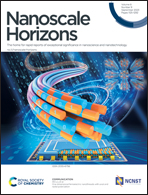Colloidal gold-based immunochromatographic biosensor for quantitative detection of S100B in serum samples†
Abstract
Traumatic brain injury has become a serious public health problem. Timely detection, diagnosis and treatment of brain injury are closely related to the prognosis of patients, so identification of highly sensitive and specific biochemical markers of brain injury has important clinical value. Currently, the most studied and most promising marker is the protein S100B. In this study, a rapid quantitative biosensor for S100B was established using colloidal gold labeling and double antibody (8C10-6B8) sandwich immunochromatography. The biosensor was capable of quantifying S100B within 15 min, and showed no cross-reactivity with S100A, NSE, GFAP, or PGP9.5. The detection limit was determined to be 4.6 pg mL−1 with a linear range of 0.01–2 ng mL−1. Recovery experiments also indicated that the method had an acceptable accuracy. Moreover, the quantitative colloidal gold assay correlated well with the results of a chemiluminescence immunoassay when testing 40 clinical serum samples. Our developed colloidal gold quantitative immunochromatographic biosensor is a rapid, sensitive, specific and accurate method for the detection of S100B protein in serum, which is useful in the clinic for early diagnosis, as well as assessment of disease progression and prognosis of traumatic brain injury.

- This article is part of the themed collection: Graphene and 2D Materials in Healthcare


 Please wait while we load your content...
Please wait while we load your content...